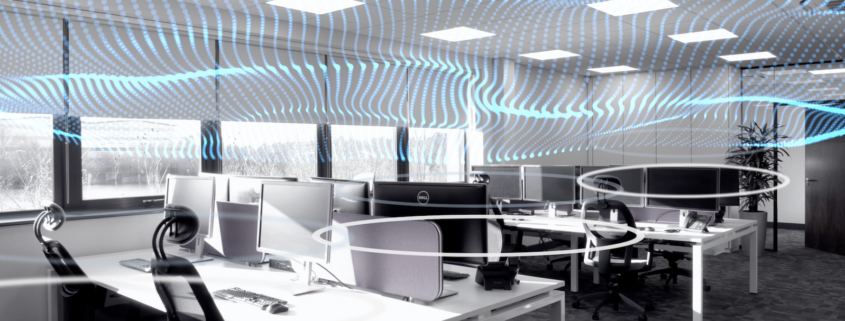Collaboration among workers has become increasingly seamless, prompting many businesses to adopt open architecture office environments. With fewer cubicles and a greater visibility of individuals, these spaces are livelier than ever. While some welcome the close interaction with colleagues, others may find it challenging to maintain focus among the chatter and noise.
Introducing sound to a space actually makes the room seem quieter. This counterintuitive phenomenon occurs because the added sound diminishes the clarity of human speech. When speech becomes less intelligible, it becomes less distracting—often to the point of going unnoticed. Sound masking proves effective in reducing noise distractions, preserving speech privacy, and enhancing workplace acoustics. Conversations blend into the background, minimizing disruptions. Workers can engage in discussions with the knowledge that their conversations will not be easily overheard by nearby colleagues. Sound masking contributes to the creation of a more comfortable acoustical environment—not too quiet and certainly not too loud.
In essence, sound masking achieves the perception of a quieter environment by elevating the ambient noise level and making speech less intelligible and, consequently, less distracting. This ambient sound, mimics the gentle hum of airflow, and is precisely engineered to match the frequency of human speech. By targeting conversational distractions, sound masking mitigates their impact.
It is important to note that sound masking does not eliminate all speech noise or cancel sound; rather, it reduces the distance at which conversations can be heard and understood by others, referred to as the radius of distraction.
In addition to the evident reduction in noise, employers have reported that implementing a sound masking system has led to enhanced office comfort, increased productivity, and greater employee satisfaction.
HS Technology Group can seamlessly integrate a sound masking system into virtually any space. However, it is advisable to consider this addition during the construction phase or when your office is undergoing any remodeling.






